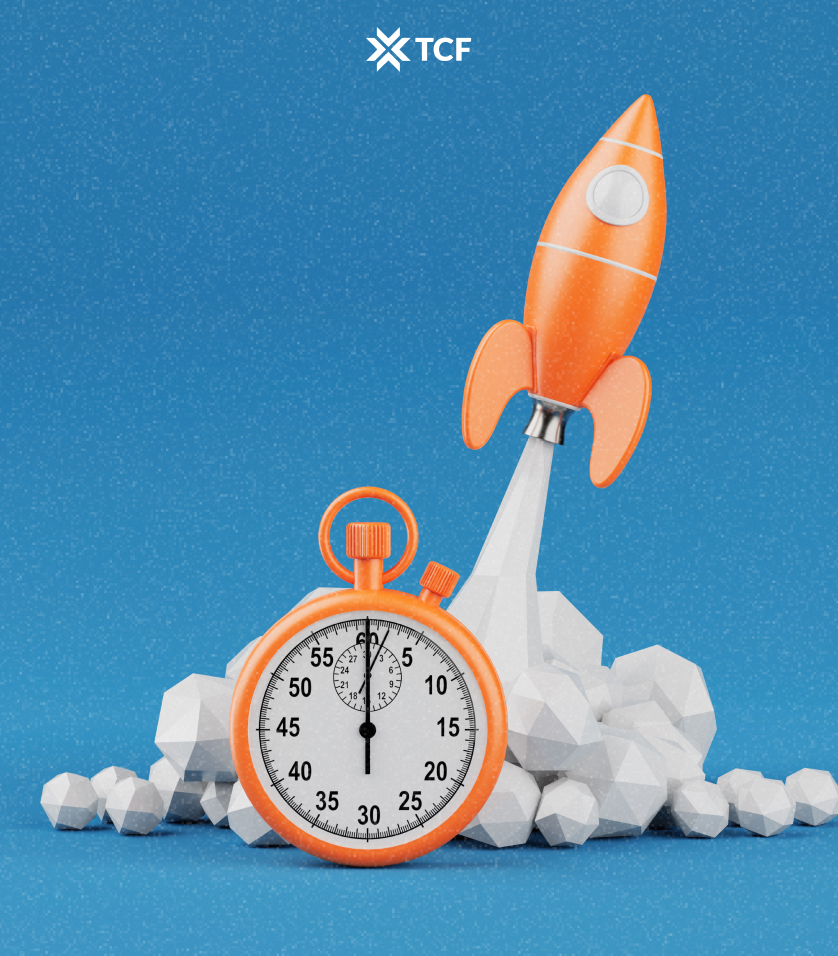Launching a crowdfunding campaign without an audience is the fastest way to find out how quiet the internet can be.
Even the best product, story, and visuals need people behind them, real people who are already paying attention before launch day.
The most successful campaigns start months earlier. Their creators test ideas, grow mailing lists, and build anticipation piece by piece until that first day feels like a celebration.
This guide breaks down how to do the same. You’ll learn how to attract early followers, keep them engaged, and build momentum that carries through launch week and beyond.
By the end, you’ll have a step-by-step plan to grow an audience that converts, so when you go live, you’re launching to a crowd.
[[cta2]]
Why Launching a Crowdfunding Campaign Without an Audience Is a Trap
Most failed campaigns fail because no one was waiting for them.
Crowdfunding depends on momentum. The first 48 to 72 hours decide your trajectory. Will you climb Kickstarter’s rankings, attract organic traffic, and trigger that wave of social proof that fuels everything after? Without an audience ready to back you, the answer is most probably no.
Paid ads can’t save a cold launch either. Costs skyrocket when you’re targeting people who’ve never heard of you, and conversion rates stay painfully low. Even the best creative struggles when there’s no trust or anticipation behind it.
A warm audience fixes that. These are the people who’ve seen your updates, followed your progress, and already decided they want what you’re making. When they show up in the first hours, they create visible momentum that platforms reward and new backers notice.
Before you start worrying about your campaign video or reward tiers, focus on the part that decides everything else: the crowd itself.
How to Know If Your Crowdfunding Audience Is Ready to Launch
A big list means nothing if no one’s engaged. You can have thousands of emails, hundreds of followers, or a full Discord server, but if they’re not opening, clicking, or talking, they won’t back you.
A ready audience isn’t measured by size. It’s measured by intent. The signs are simple: people reply to your updates, share your posts, and ask when the product will be available. They don’t need convincing, they’re already waiting.
Before launch, look at your data and behavior together.
- Email metrics: open rates above 40%, click rates above 5%, and steady growth over time.
- Social metrics: consistent engagement, saves, and shares instead of one-off spikes.
- Prelaunch metrics: a strong conversion rate from ads to signups (above 25% for highly targeted traffic) and at least a few hundred (or thousand, depending on your goals) warm leads who’ve shown genuine interest.
If you’ve hit these numbers, that’s when it’s time to shift from building awareness to building excitement.
An audience that’s ready needs a date, a link, and a reason to back early.
The Three Phases of Building a Crowdfunding Audience Before Launch
Audience building is a sequence. Each stage has its own goal, and skipping one is how most campaigns lose momentum before they start. Think of it as three phases that quietly stack on each other: foundation, growth, and momentum.
Phase 1: Foundation and Identity (6+ months before launch)
This is the setup stage.
You’re defining who your audience is and what they care about. Start by shaping your story: why you’re building this, what problem it solves, and who it’s for. These early steps set the foundation you’ll rely on when you start a crowdfunding campaign later.
At this point, the goal is awareness. Get people familiar with your idea. Gather feedback, test early reactions, and note what sparks curiosity. The data here will shape everything that follows.
Phase 2: Growth and Validation (3-6 months before launch)
Now you start to scale what worked.
Test ad creatives, refine your messaging, and see what converts. Use small paid tests to understand which angles attract signups. Run surveys or polls to validate demand and ideal price points.
Build a pre-launch email list and begin nurturing those leads. These subscribers should feel part of your process. Include updates, behind-the-scenes photos, or early feature reveals. By now, your focus shifts from finding new people to proving demand.
Phase 3: Momentum and Urgency (1-2 months before launch)
This is the final stretch.
You’ve validated your audience, now you need to activate them. Start sharing your countdown, teaser videos, and early reward tiers. Ramp up communication across every channel.
This phase is about building anticipation. Every post, email, or ad should point toward one moment: launch day. When the clock starts, you want your audience already waiting with wallets open.
Core Tactics to Build a Crowdfunding Audience That Converts
You don’t need to do everything. You need to do the right things consistently.
These are the tactics that actually build audiences who convert when it counts: refined through hundreds of pre-launch campaigns and real performance data.
1. Build and Centralize Your Lead System
Every strong launch starts with a lead funnel.
Create a clean, focused landing page that explains your product’s value in seconds and drives signups. Collect two types of contacts: general leads (email subscribers) and VIPs or reservation leads who show higher intent.
Platforms like Prelaunch.com simplify this process by combining landing pages, A/B testing, and reservation systems in one place. You can test different angles, track conversion rates in real time, and validate interest before launch without juggling multiple tools.
Centralize everything in one system: your email list, community groups, and tracking tools should connect. Use WhatsApp or Discord for your warmest followers to keep communication personal. This is the first step of community building.
2. Show Proof
Trust is what turns curiosity into backing.
Skip the overproduced videos and focus on raw, credible proof. Show real footage of your product solving a problem, record quick updates from the founders, or post unboxing videos filmed on a phone.
People need confidence that what they see is what they’ll get. Every honest glimpse builds that trust.
3. Nurture and Learn From Your Leads
Once someone signs up, the work begins.
Use email to tell your story over time: why the product exists, how it’s developing, and when it launches. Keep the tone conversational and steady. Once a week is enough to stay visible without overwhelming inboxes. Follow proven email marketing tips like short subject lines, strong visuals, and one clear call-to-action per message to keep engagement high throughout prelaunch.
Before launch, send a short survey asking why leads haven’t become VIPs or placed reservations. Use the answers to refine your messaging and address concerns directly.
In real campaigns, up to 5% of email subscribers convert, compared to 30-35% of reservation leads, proving how much intent and nurturing matter.
4. Build a Space for Your Core Supporters
Community drives credibility.
Create a private space for your most engaged leads: a WhatsApp group, Discord server, or early-access chat. Share progress before the public does, let them ask questions, and encourage feedback.
Have the founders speak directly. Tell the story in real time. These small, interactive spaces create emotional investment that no ad can replicate, and those members often become your first and loudest backers.
5. Test, Track, and Iterate Everything
Treat every action as an experiment.
Run small ad tests to find which visuals, headlines, or pain points attract the best leads. Track cost per signup and engagement rates.
Monitor open rates, landing page conversions, and survey feedback, then adjust your strategy weekly.
Every percentage point you improve now, from a cheaper lead to a better email subject line, multiplies when launch day arrives.
Common Mistakes & Traps to Avoid Before Your Crowdfunding Launch
Even experienced creators fall into these. They’re subtle because they feel productive. But each one quietly drains momentum, money, or trust before your campaign ever goes live.
1. Chasing Vanity Metrics
It’s easy to equate visibility with validation. You post consistently, get a few thousand likes, maybe a viral comment or two and it feels like progress.
But followers who don’t click, sign up, or engage won’t back your campaign. They’re an audience, not a community.
The result? Launch day arrives, your page looks great, but your “fans” are nowhere to be found.
You should track leads, not likes. Prioritize email signups, reservations, and engaged groups. Real interest shows in actions.
2. Overproducing Content Too Early
Spending weeks editing a cinematic teaser before anyone’s seen your product feels like preparation, but it’s often procrastination in disguise. You end up polishing assets for an audience that doesn’t exist yet.
Without feedback, even the best content misses what actually matters to potential backers. You don’t know what details they care about, what questions they’re asking, or what visuals make them trust you.
Start small. Share quick, raw clips and observe reactions. Once you know what resonates, invest in better production. Clarity before polish, always.
3. Spending Ad Budget Too Early
Early ad spend can be the biggest trap.
Without message-market fit, your money goes into educating the wrong audience. Clicks don’t convert, cost per lead climbs, and you end up doubting the product instead of the strategy.
Many campaigns rush ads before they have enough organic insight to know what works.
Try treating ads as experiments. Spend small amounts to learn what angles perform best, then scale once your cost per lead and conversion rates hold steady.
4. Ignoring Feedback Loops
Silence isn’t success. It’s often a signal that something’s off.
When creators stop tracking engagement or skip surveys, they lose the one thing that could have fixed their strategy in time: real audience input.
Ignoring feedback means repeating the same mistake for months: spending more, reaching the same people, and wondering why nothing moves.
Every piece of data you have in gold. Survey leads who don’t convert, monitor open rates, track what posts spark replies. The faster you react, the stronger your prelaunch becomes.
5. Assuming One Size Fits All
Copying another campaign’s tactics feels safe. They raised six figures, so you borrow their script, their ads, maybe even their visuals. But every niche behaves differently. What works for a fitness product might flop for a desk gadget or a fashion item.
Trying to apply someone else’s formula blindly keeps you from seeing what makes your audience unique.
Use others for inspiration, not imitation. Build your framework, then test it against your data and feedback.
6. Waiting for “Perfect” Before Starting
This one looks harmless, right? Planning, tweaking, optimizing. But perfectionism keeps more campaigns stuck in draft mode than bad ideas ever could.
You keep editing copy, redoing visuals, and telling yourself you’ll launch when it’s “ready.” It never is.
The cost is momentum. While you wait for perfection, someone else is already building in public, collecting feedback, and growing faster.
Launch your prelaunch. Test small, iterate, and improve as you go. Progress beats polish every single time.
Templates, Cheatsheets, Tools & Next Steps for a Successful Crowdfunding Launch
You’ve got the strategy. Now it’s time to turn it into motion. These templates and checklists will help you build, test, and measure every part of your prelaunch system without starting from scratch.
Email Funnel Template (3-5 Emails)
Your goal is to move new leads from awareness to anticipation. Use this simple flow as your foundation:
- Welcome Email: Introduce yourself, the problem you’re solving, and what subscribers can expect next.
- Behind the Scenes: Share early development photos, raw product demos, or founder stories to build trust.
- Proof and Credibility: Add early user quotes, prototype results, or short testimonials that show progress.
- Countdown Email: Announce your timeline, tease launch-day perks, and make people feel part of something early.
- Final Reminder: Send a short, personal note before launch inviting them to join your VIP list or reserve early.
Keep it conversational, short, and visual. Make sure the sequence feels like a journey.
Social Content Prompts for Prelaunch
Use content to create familiarity. Here’s a framework for what to post each week:
- Progress updates: “We’re finalizing the prototype this week. Here’s a peek.”
- Founder moments: A quick video explaining what inspired the product.
- Behind-the-scenes clips: Short clips from testing, packaging, or design tweaks.
- Community polls: Let people vote on colors, features, or naming decisions.
- Educational posts: Show the problem your product solves in everyday terms.
Rotate these themes through a simple 3-4 post per week schedule. The goal is rhythm, not volume.
Self-Audit Worksheet
Before scaling anything, check your foundation. Ask yourself:
- Do I have a clear target audience and message?
- Are my leads organized by intent (general, reservation, VIP)?
- Does my landing page clearly show value in under five seconds?
- Do I have at least one form of social proof (demo video, testimonials, founder video)?
- Are my signups steadily increasing week over week?
If you can’t say yes to most, pause and refine before pushing ad spend.
Launch Day Readiness Checklist
Before hitting “Go Live,” confirm the essentials:
- Landing page traffic and signups validated through tests
- Email sequences scheduled and tested
- VIP community prepped for launch-day support
- Press, influencer, and ad campaigns queued
- Campaign page reviewed for visuals, copy, and pledge logic
- Backup assets (images, captions, videos) ready for quick swaps
Momentum depends on prep. Once you go live, there’s no time for patching.
12-Week Prelaunch Milestone Plan
The full prelaunch process often takes six months or more. For creators working on a tighter timeline, this 12-week version condenses the same three phases (Foundation, Growth, and Momentum) into a focused, step-by-step sprint.
Weeks 1–3: Build your landing page, define your audience, and start testing small ad creatives.
Weeks 4–6: Collect leads, open your first community channel, and post consistent weekly updates.
Weeks 7–9: Refine your messaging, run small validation surveys, and begin VIP outreach.
Weeks 10–11: Ramp up anticipation with countdown content, early-backer perks, and teaser emails.
Week 12: Test everything, finalize launch assets, and brief your community on launch day.
The best campaigns treat prelaunch like a launch of its own. It’s where success is quietly decided.
Tool Spotlight: Prelaunch.com
Prelaunch.com is an all-in-one platform designed to help creators validate their ideas and grow an audience before launch.
What it does:
- Builds high-converting landing pages in minutes with ready templates optimized for crowdfunding.
- Collects both email signups and paid reservations, so you can see who’s actually ready to buy, not just curious.
- Tests different versions of your page (headlines, images, price points) to find the message that converts best.
- Tracks key metrics like conversion rates, cost per lead, and reservation intent in real time.
- Gathers audience feedback through built-in surveys that show what people love or what’s holding them back.
Why it’s worth a try:
- Helps you validate demand early, before investing heavily in ads or production.
- Turns your audience-building process into a data-driven system, not guesswork.
- Simplifies workflows. No juggling multiple tools for landing pages, analytics, and community signups.
- Works even without a finished prototype, so you can test concepts or designs first.
The platform essentially acts as your prelaunch control center, helping you prove that your idea has traction long before the Kickstarter clock starts ticking.
Conclusion
Crowdfunding success begins long before launch day. Every strong campaign starts with a clear story, a validated idea, and an audience that’s already paying attention.
Creators who prepare months ahead reach their goals faster. They collect real leads, nurture interest, and create excitement that carries into launch week. They use feedback, data, and authentic communication to build trust and anticipation.
Prelaunch is the foundation of every successful campaign. It makes ads more efficient, content more powerful, and launch day smoother. Tools like Prelaunch.com help you centralize your efforts, test ideas early, and track real engagement.
Begin now. Share your process, build your list, and connect with your community. Each small step moves you closer to a campaign that launches with energy and confidence.
[[cta2]]






.png)


.png)




